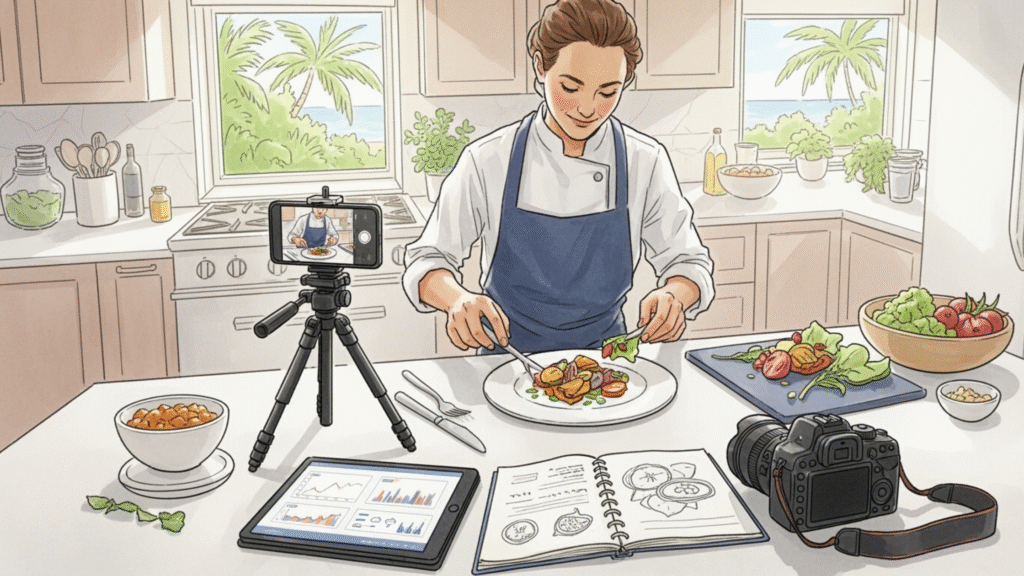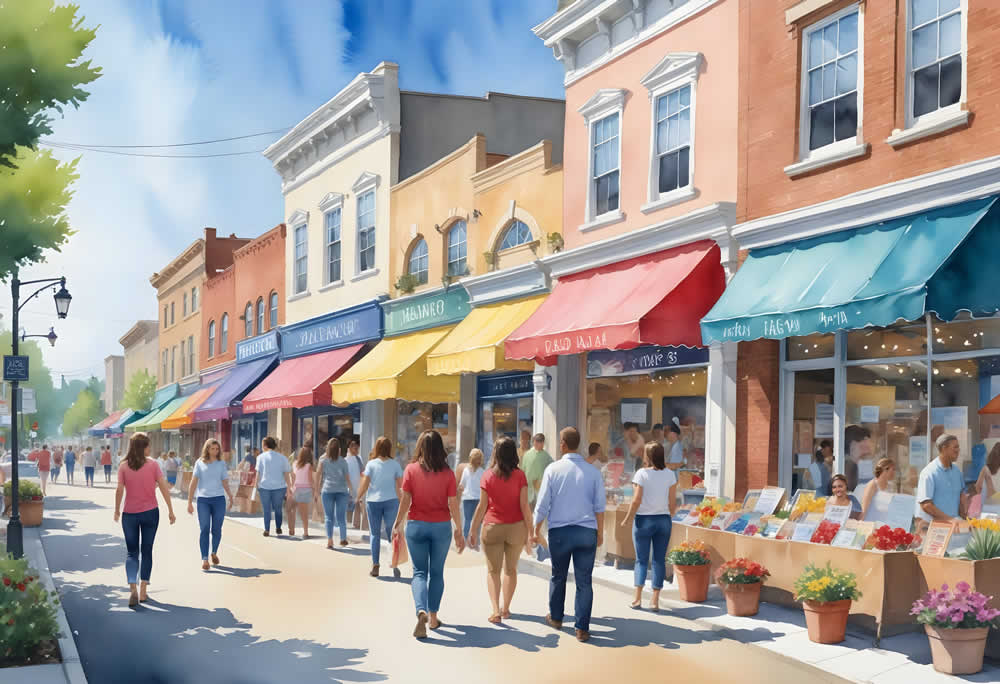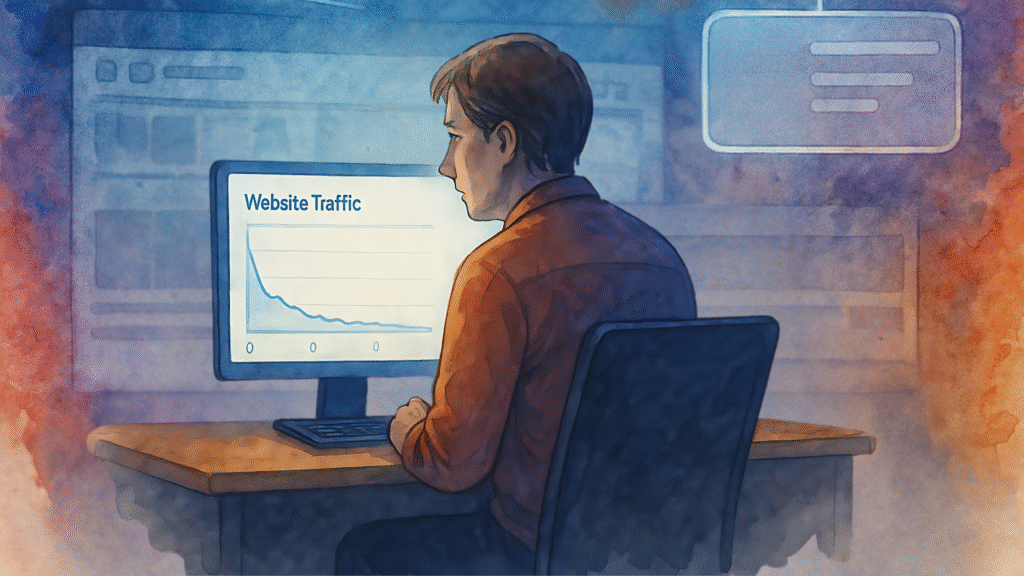The digital world has transformed the role of chefs and food enthusiasts from back-of-house experts to front-and-center personalities. In the highly competitive and vibrant food scene of Sarasota, building a strong personal brand isn’t a luxury; it’s the most crucial ingredient for success.
A well-defined personal brand is your digital reputation. It showcases your unique culinary philosophy, connects you with your target audience, and ultimately, sets you apart from the crowd. For Sarasota’s chefs and food bloggers, a powerful brand is the difference between being a local favorite and becoming a household name. This guide will walk you through the latest trends, technologies, and strategies you need to build a compelling personal brand in 2025, with a keen focus on the specific opportunities found right here on the Suncoast.
The Recipe for Personal Branding: Core Ingredients
Before we get into the specifics of 2025, it’s essential to understand the fundamental components of personal branding. Think of it as a recipe. Without the right base, the final dish falls flat.
- Define Your Niche: What makes your culinary voice unique? Are you a chef specializing in sustainable, farm-to-table cuisine, much like Chef Rich of enRich Bistro in Sarasota? Or are you a food blogger who focuses on unique, plant-based desserts? Your niche is your flavor profile. It’s what you want to be known for. According to a StartUs Insights report, 2025 audiences are increasingly seeking creators who champion specific, authentic perspectives. A broad, generic approach will simply get lost in the noise. For a Sarasota-based brand, this could mean specializing in Gulf Coast seafood, highlighting local farmers’ market produce, or creating content around Florida-inspired fusion cuisine.
- Craft Your Narrative: Your personal story is your most powerful tool. Why did you become a chef? What inspired your passion for food? Share your journey, your challenges, and your triumphs. Your audience wants to connect with the person behind the plate. As seen with local personalities like Chef Melissa of Suncoast Cuisine, sharing a genuine story builds trust and creates a fiercely loyal following. Your narrative is what transforms casual followers into a true community, a key factor in brand longevity.
- Establish a Visual Identity: Your brand’s aesthetic must be consistent across all platforms. This includes your logo, color palette, typography, and most importantly, your food photography. In the visual-first world of Instagram and TikTok, professional, high-quality food photography and videography are non-negotiable. A blurry phone snapshot won’t cut it anymore. Consider collaborating with a local professional who understands how to capture the unique light and vibrant colors of the Sarasota area.
- Be Authentic: In a digital landscape of carefully curated feeds, authenticity reigns supreme. Be yourself. Share your personality, your quirks, and your genuine love for what you do. Your audience can spot inauthenticity from a mile away. In the culinary world, this means showcasing the real, unscripted moments: the trial and error, the joy of a perfectly executed dish, and the honest enthusiasm for ingredients sourced from local spots like the Sarasota Farmers Market. Authenticity creates a foundation of trust that is truly priceless.
2025: The Digital Kitchen
The culinary and digital worlds have never been more intertwined. To build a successful personal brand in 2025, you must leverage the latest technological advances.
Technological Tastes
The tech landscape is changing fast. Here’s what’s on the menu for 2025:
- AI-Powered Content Creation: Generative AI is no longer a futuristic concept; it’s a practical tool. In 2025, AI-powered platforms can help you brainstorm recipe ideas, write compelling blog post outlines, and even assist with social media captions. However, the human element is still king. Use AI to streamline your workflow, not to replace your creativity. A 2025 report from the Institute of Food Technologists notes that while AI is accelerating innovation in areas like food product development, human creativity and taste remain indispensable. The ICL Group also highlights how AI is being used for predictive analytics in food safety, enhancing quality control and minimizing food waste through supply chain optimization. Chefs and bloggers can use these tools to create more efficient and responsible content, giving them a competitive edge.
- Hyper-Personalization with Data Analytics: The latest marketing platforms allow you to analyze your audience’s behavior with unprecedented detail. By tracking which recipes get the most engagement or what time your audience is most active, you can create a content strategy that’s highly tailored to their preferences. This level of personalization is key to driving engagement and building a loyal community. Platforms like Google Analytics have become more intuitive, providing real-time data on user behavior that allows for nimble and responsive content creation.
- Interactive & Immersive Experiences: Augmented Reality (AR) and Virtual Reality (VR) are moving beyond gaming and into the culinary space. Imagine an AR filter that lets your audience see a 3D model of your famous Sarasota-style crab cakes, or a VR experience that takes them on a virtual tour of a local farm. These technologies create memorable, immersive brand experiences that set you apart. Companies like Crave Labs are developing new AR applications specifically for the food industry, allowing for interactive menus and educational experiences that can be integrated into your website or social media.
The Power of Video in 2025
Short-form video platforms like TikTok, YouTube Shorts, and Instagram Reels continue to dominate the digital conversation. Data from a 2025 Hypefy report indicates that short-form food content is a primary driver of new consumer discovery and engagement.
- Storytelling in Seconds: Use these platforms to tell quick, engaging stories. Show a time-lapse of a complex recipe, share a funny kitchen blooper, or highlight a visit to a local Sarasota farmers market. The fast-paced, entertaining nature of these platforms is ideal for capturing attention and building a broad audience.
- The Rise of Long-Form: While short-form is great for quick hits, long-form video on YouTube is still vital for building authority and a deeper connection. A 2025 industry trend report noted that long-form recipe tutorials and “day in the life” vlogs are crucial for establishing expertise and trustworthiness. They allow you to showcase your full process and personality in a way that a 60-second clip can’t.
Case Studies & Events: Local & Global Inspiration
To truly master your personal brand, you must learn from the best. Here are some real-world examples and industry events that provide valuable insights.
Case Study: The Rise of a Sarasota Chef
Let’s look at a hypothetical example that mirrors the success of many real Sarasota culinary professionals. Chef Juliana, a private chef in Sarasota, decided to launch her personal brand. She began by defining her niche: elevated, health-conscious meals using only locally sourced, sustainable ingredients from farms around the Suncoast. Her branding focused on a clean, modern aesthetic with a color palette inspired by nature.
She leveraged the 2025 trend of hyper-personalization, using data analytics to understand that her audience was most interested in quick weeknight meals and meal-prepping tips. She created a series of “30 Minute Gourmet” videos on TikTok and Instagram Reels, which quickly went viral. She then used longer-form content on her YouTube channel to dive deeper into the science behind her healthy cooking, citing sources and providing detailed tutorials.
Her brand’s authenticity shone through in her “farm to table” series where she personally visited local Sarasota farms, like Jessica’s Organic Farm and Worden Farm, and documented her ingredient sourcing. This not only built trust with her audience but also supported her local community, a key value for many modern consumers.
Events that Shape the Culinary World
Staying relevant means staying informed. Attending or following major industry events gives you a pulse on the latest trends, technologies, and networking opportunities.
- Anuga 2025: As the world’s largest food and beverage trade fair, Anuga sets the stage for the next wave of industry breakthroughs. The 2025 event in Cologne, Germany, focused heavily on sustainable practices and the integration of AI in food production. Following these conversations online can provide inspiration for your own brand’s content and messaging.
- The Food Expo 2025: This global event showcased culinary excellence and technological innovation. It’s a great platform to see how other chefs and brands are leveraging new tools, from smart kitchen appliances to food waste tracking systems. You can find more details on their official website.
- National Restaurant Association Show: While a trade show for a different audience, the National Restaurant Association Show is a great place to see the latest in kitchen technology, food trends, and business strategies that can be applied to a personal brand.
SEO: Your Digital Sous Chef
You can have the most beautiful brand and the most delicious recipes, but if no one can find you, it’s all for nothing. Search Engine Optimization (SEO) is how you ensure your brand is discovered by the right people at the right time. For chefs and food bloggers, this means making your content rank high on Google and other search engines.
- Keyword Strategy: Don’t just post. Post with purpose. For a Sarasota-based business, this means targeting local keywords. A post about “Sarasota seafood recipes” or “best vegan restaurants in Sarasota” is far more likely to reach your target audience than a generic one. Use tools like Google’s Keyword Planner to find keywords your audience is searching for, then integrate them naturally into your blog posts, recipe titles, and video descriptions.
- Content That Sells: A great article isn’t just a collection of words. It’s a well-structured resource. For recipe blogs, this means having clear headings, step-by-step instructions, and high-quality images. Optimize your images with descriptive alt text (e.g., “Sarasota-style black grouper with mango salsa”) so they can be found in image searches.
- Backlinks & Authority: Google values content that other reputable sources link to. Collaborate with other Sarasota food bloggers, contribute recipes to local publications, or get featured in articles about the Sarasota food scene. These backlinks signal to search engines that your brand is a trusted authority in your niche. A great example is a local food blog like Sarasota Foodies, which regularly features local talent, providing valuable backlinks.
Conclusion: A Dash of Marketing, A Spoonful of Passion
Building a personal brand as a chef or food blogger in 2025 requires a blend of culinary skill, digital savvy, and authentic storytelling. It’s about more than just cooking; it’s about connecting with an audience on a deeper level. By defining your niche, leveraging new technologies like AI and hyper-personalization, and embracing the power of video, you can carve out a unique space for yourself in the digital culinary world.
For Sarasota businesses, the local market presents a unique opportunity. The city’s thriving food scene, from fine dining at Ocean Prime to casual favorites like The Fat Rabbit, means there’s a hungry audience ready to discover new culinary talent. Building a strong personal brand not only helps you reach this audience but also establishes you as a vital part of the local community.
Are you ready to take your culinary brand to the next level? Our team at Communica PRO understands the Sarasota market and the nuances of digital marketing for the food industry. From crafting a compelling brand story to executing an SEO strategy that drives results, we’re here to help you savor your niche and connect with the audience you’ve been searching for.
Build Your Culinary Brand with Communica PRO Today!
FAQs: Your Culinary Branding Questions Answered
1. What is the most important social media platform for a chef or food blogger in 2025?
For visual appeal and rapid engagement, TikTok and Instagram Reels are currently the most powerful platforms for food content. They’re excellent for showcasing quick recipes, behind-the-scenes content, and building a community. However, YouTube remains crucial for long-form, in-depth tutorials and establishing long-term authority.
2. How do I make my content stand out in a crowded market like Sarasota?
Focus on authenticity and hyper-localization. Instead of just posting a generic recipe, share a story about how it was inspired by a specific Sarasota event or a local ingredient you found at the Sarasota Farmers Market. This personal touch resonates deeply with a local audience and makes your content truly unique.
3. How can a chef or food blogger monetize their personal brand in 2025?
Monetization opportunities in 2025 are diverse. They can include:
- Brand partnerships and sponsored content, which a 2025 industry report highlights as a major revenue stream.
- Selling digital products, like e-cookbooks or meal plans.
- Creating a subscription-based platform, such as Patreon, for exclusive content.
- Offering in-person or virtual cooking classes.
- Using affiliate marketing for kitchen products or ingredients.
4. What kind of professional help should I consider for my personal brand?
While you can do a lot on your own, a professional marketing partner can provide a significant advantage. A company like Communica PRO can assist with crafting your brand strategy, performing a thorough SEO audit, and creating high-quality content that truly reflects your brand’s voice. They can also help you navigate the complexities of data analytics and social media advertising to maximize your reach and impact.










